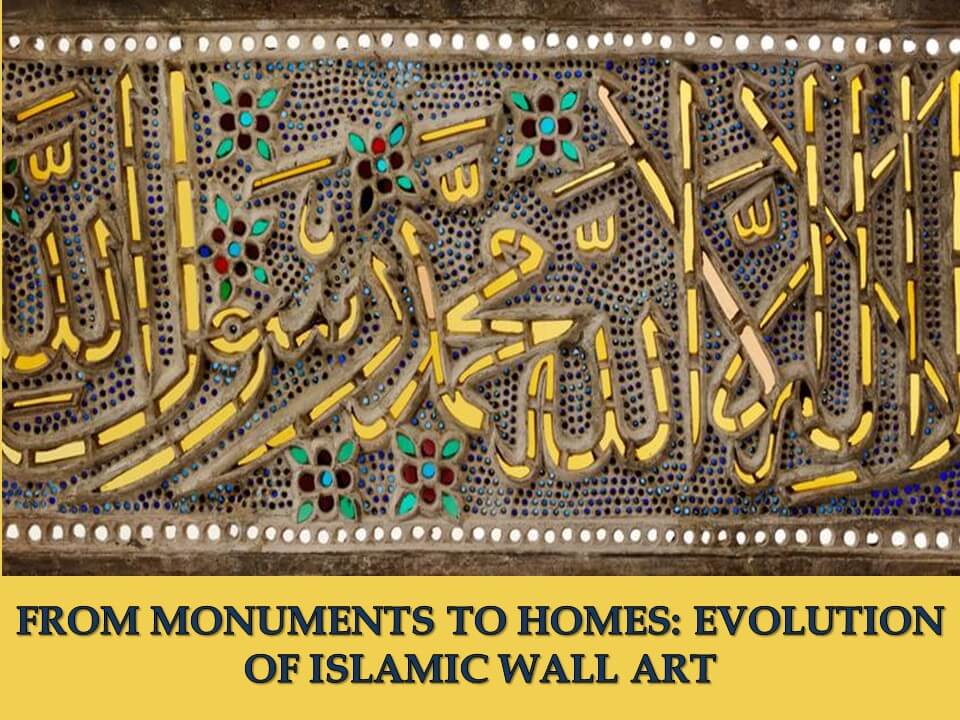Have you been keying in on Google search for ‘Islamic art wall hangings online India’? Well, in that case, it would help to brush up our knowledge of Islamic wall art. First, it is important to know that the mainstay of Islamic wall art is Islamic calligraphy, which is the art of writing the verses of the Quran in stylish fonts. The term ‘Islamic’ precedes this kind of calligraphy as its content is derived from the Quran, and this art was essentially born after Islam took root in Arabia.

Since Islam does not allow imagery of human beings or animals, the only way to decorate the walls of monuments as well as to enhance the beauty of artifacts was by drawing, painting, inscribing, etching or engraving the verses of the Quran on them.
Calligraphy, Greek for beautiful writing, thus became the primary expression of wall art in Muslim empires, ranging from the Ottoman sultanate in the west to the Mughal dynasty in the east. From the Blue Mosque in Istanbul, Turkey, to the Taj Mahal in Agra, India, the world-famous Muslim monuments are all adorned with Quranic verses written in artistic styles. In fact, Islamic calligraphy is a key factor in their art and architecture.
The Arabic script rendered itself wonderfully to calligraphy thanks to its abundance of loops, curves, dashes, dots and diacritical marks, all of which can be deftly manipulated to create a beautiful piece of writing.
As Muslims spread to different parts of the world – from Spain in the west to large swathes of India in the east, they employed highly skilled calligraphers and artisans to adorn their monuments and buildings with Islamic calligraphy. The artists would also paint/carve/stich/etch verses on prized pieces of art, like ceramics, wooden artifacts and carpets.
Each region developed its own style of Islamic calligraphy. The Kufic font of straight, angular strokes developed in Kufa, Iraq; the ornate Diwani style took off in Istanbul, Turkey; the figurative Tughra writing flourished in India.
As Islamic empires were defeated by European imperialists, Islamic calligraphy received a setback but regained its glory when new nations gained independence.
Recently, people have been developing an interest in Islamic calligraphy, thanks to the online revolution, especially e-commerce. From historical monuments, Islamic calligraphy now finds itself in modern homes. On account of digital technology, e-commerce, and increasing incomes of people, Islamic calligraphy has made a comeback in the form of ‘Islamic wall art’. One can buy beautiful calligraphic works of art from the many online stores as well as generic marketplaces that sell Islamic wall décor. It is a great way to adorn your homes, offices or restaurants, or to give as a gift it to a friend or a newlywed couple.
Clearly, Islamic calligraphy has seen major changes over the years in terms of the art itself, the scale, the accessibility and the demographic profile of buyers. So be sure to discover a treasure of art if you are searching Google for ‘Islamic art wall hangings online India’